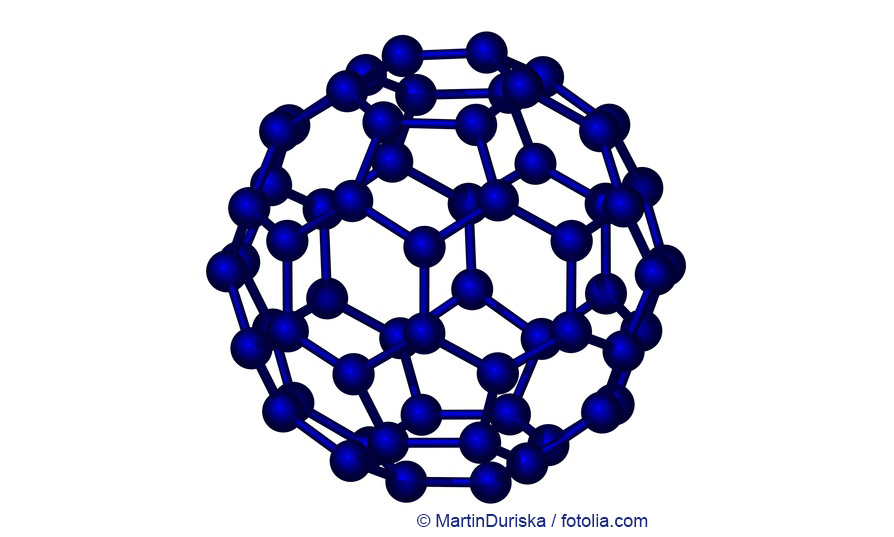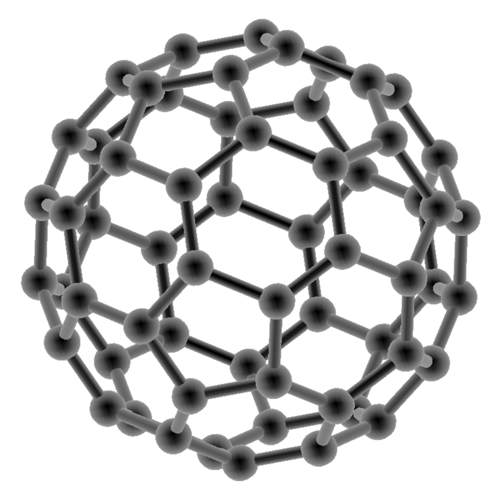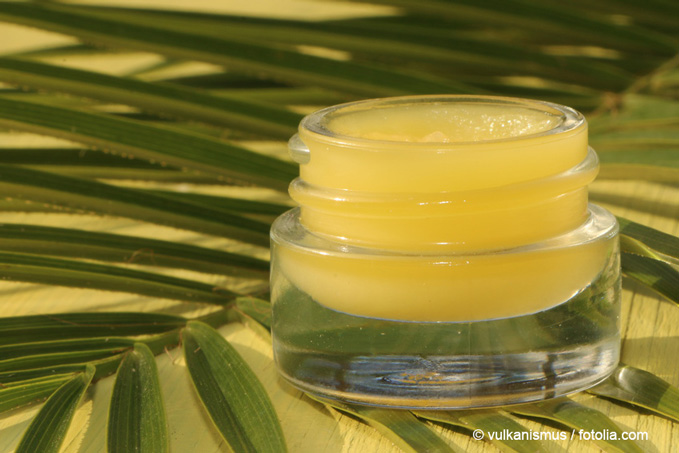The large variety of fullerenes does not allow any general or comparative statements on their toxicity. Many organisms internalise fullerenes into the body. The fullerene production process, in particular the use of catalysts, and the use of different solvents often influence the toxicity since these substances can also have toxic effects. This makes it difficult to clearly attribute toxic effects to pure fullerenes.
Until 2010, the solvent tetrahydrofuran (THF) has been used in many studies to disperse fullerenes in aqueous media used for biological tests. Such suspensions containing THF-dissolved fullerenes exerted toxic effects on environmental organisms, but toxicity was mainly due to degradation products of the THF in aqueous solutions [zotpressInText item="{4274171:QJ4AFVKC},{4274171:WBZLGK7N},{4274171:A4VDB29R},{4274171:MUNILG3T}"].S olutions with fullerene nanomaterials without degradation products did not cause any negative effects, which is why since 2010 the use of solvents is avoided and alternatives such as stirring or ultrasonic treatment are applied .

Fish take up fullerenes from the water and exert species-specific alterations such as changed fat composition, gill structure, mortality and developmental disorders. An stimulation of stress genes in zebrafish embryos as well as in immune reaction in fathead minnow embryos by fullerenes could also be observed, with light having an intensifying effect .
 In mussel blood cells, fullerenes triggered inflammation but were not acutely toxic. In contrast, low concentrations of fullerene nanomaterials also had a toxic effect on oyster embryos, adult oysters, and isolated liver cells. However, toluene was used as the solvent, which could form similar degradation products as THF .
In mussel blood cells, fullerenes triggered inflammation but were not acutely toxic. In contrast, low concentrations of fullerene nanomaterials also had a toxic effect on oyster embryos, adult oysters, and isolated liver cells. However, toluene was used as the solvent, which could form similar degradation products as THF .
 In the case of water fleas, high doses of fullerenes in the water cause increased movement activity and an increased residence of the animals on the water surface. The water fleas were not poisoned in presence of fullerenes, but showed a clear escape behaviour. In a further study, a reduced swimming capacity of the animals was observed. In general, water fleas actively take up the fullerenes from the water into the intestine. The fullerenes do not, however, pass into the body tissue and are presumably excreted completely .However, all observed behavioural changes could be an important indication of a disturbance of the ecosystem. In the case of mosquito larvae, developmental retardation caused by fullerenes has been reported .
In the case of water fleas, high doses of fullerenes in the water cause increased movement activity and an increased residence of the animals on the water surface. The water fleas were not poisoned in presence of fullerenes, but showed a clear escape behaviour. In a further study, a reduced swimming capacity of the animals was observed. In general, water fleas actively take up the fullerenes from the water into the intestine. The fullerenes do not, however, pass into the body tissue and are presumably excreted completely .However, all observed behavioural changes could be an important indication of a disturbance of the ecosystem. In the case of mosquito larvae, developmental retardation caused by fullerenes has been reported .
 High doses of fullerenes in the soil cause reduced fertility in adult earthworms. In addition, damage to the skin and the underlying muscles was observed, but fullerenes do not cause mortality of the animals. On the other hand, younger earthworms were found to be more sensitive to fullerenes. They show slowed growth and have a shorter lifespan. Threadworms reacted in a similar way. They show reduced viability, lower body size and fertility .
High doses of fullerenes in the soil cause reduced fertility in adult earthworms. In addition, damage to the skin and the underlying muscles was observed, but fullerenes do not cause mortality of the animals. On the other hand, younger earthworms were found to be more sensitive to fullerenes. They show slowed growth and have a shorter lifespan. Threadworms reacted in a similar way. They show reduced viability, lower body size and fertility .
 In crops such as zucchini and tomatoes, an increased uptake of pesticides after treatment with fullerenes has been observed. Presumably, the pesticides bind to the fullerene nanomaterials and are subsequently co-transported into the plant. Bitter melon plants showed an increase in biomass, water content and fruit number, length and weight under the influence of fullerol. In water plants and algae, on the other hand, fullerenes cause a reduced growth .
In crops such as zucchini and tomatoes, an increased uptake of pesticides after treatment with fullerenes has been observed. Presumably, the pesticides bind to the fullerene nanomaterials and are subsequently co-transported into the plant. Bitter melon plants showed an increase in biomass, water content and fruit number, length and weight under the influence of fullerol. In water plants and algae, on the other hand, fullerenes cause a reduced growth .
Fullerenes also have antibacterial properties. This means that fullerenes can reduce the growth of certain bacteria .

Fullerenes generally have the property of binding other substances, e.g. chemicals. This can affect the availability and toxicity of these chemicals in the environment. Depending on the nature of the chemical, both attenuation and amplification of the toxic effect in algae and water fleas can be observed . Therefore, not only the toxicity of fullerenes alone but also their interaction with other substances present in the environment need consideration.
Concluding, the toxicity of the fullerenes is currently difficult to assess due to their diversity. However, very low doses, as are currently to be expected in the environment, do not pose any threat to environmental organisms. Many other factors, e.g. the role of catalyst residues and impurities, have to be considered.







 In mussel blood cells, fullerenes triggered
In mussel blood cells, fullerenes triggered  In the case of water fleas, high doses of fullerenes in the water cause increased movement activity and an increased residence of the animals on the water surface. The water fleas were not poisoned in presence of fullerenes, but showed a clear escape behaviour. In a further study, a reduced swimming capacity of the animals was observed. In general, water fleas actively take up the fullerenes from the water into the intestine. The fullerenes do not, however, pass into the body tissue and are presumably excreted completely .However, all observed behavioural changes could be an important indication of a disturbance of the
In the case of water fleas, high doses of fullerenes in the water cause increased movement activity and an increased residence of the animals on the water surface. The water fleas were not poisoned in presence of fullerenes, but showed a clear escape behaviour. In a further study, a reduced swimming capacity of the animals was observed. In general, water fleas actively take up the fullerenes from the water into the intestine. The fullerenes do not, however, pass into the body tissue and are presumably excreted completely .However, all observed behavioural changes could be an important indication of a disturbance of the  High doses of fullerenes in the soil cause reduced fertility in adult earthworms. In addition, damage to the skin and the underlying muscles was observed, but fullerenes do not cause mortality of the animals. On the other hand, younger earthworms were found to be more sensitive to fullerenes. They show slowed growth and have a shorter lifespan. Threadworms reacted in a similar way. They show reduced viability, lower body size and fertility .
High doses of fullerenes in the soil cause reduced fertility in adult earthworms. In addition, damage to the skin and the underlying muscles was observed, but fullerenes do not cause mortality of the animals. On the other hand, younger earthworms were found to be more sensitive to fullerenes. They show slowed growth and have a shorter lifespan. Threadworms reacted in a similar way. They show reduced viability, lower body size and fertility . In crops such as zucchini and tomatoes, an increased uptake of
In crops such as zucchini and tomatoes, an increased uptake of 

